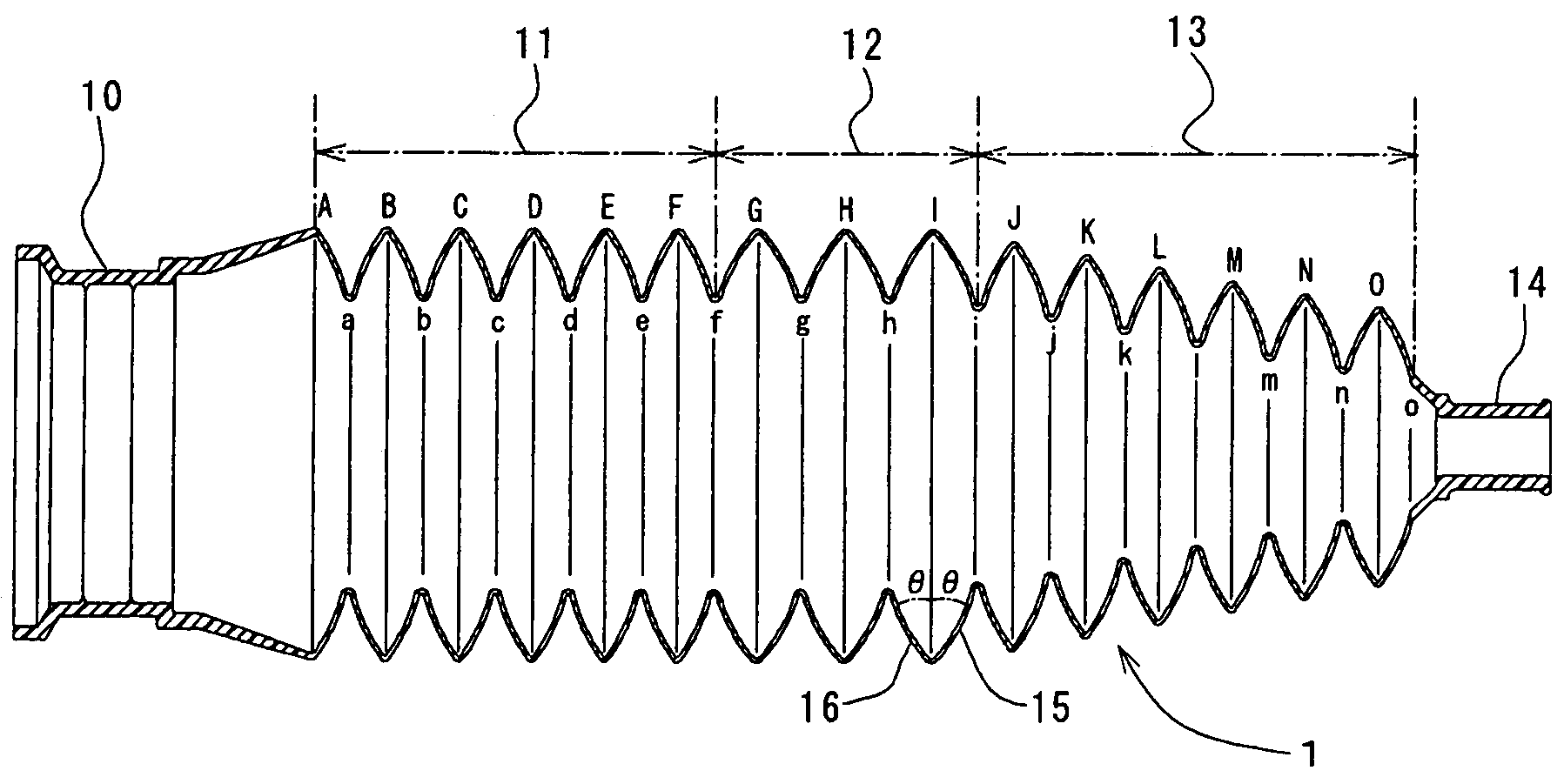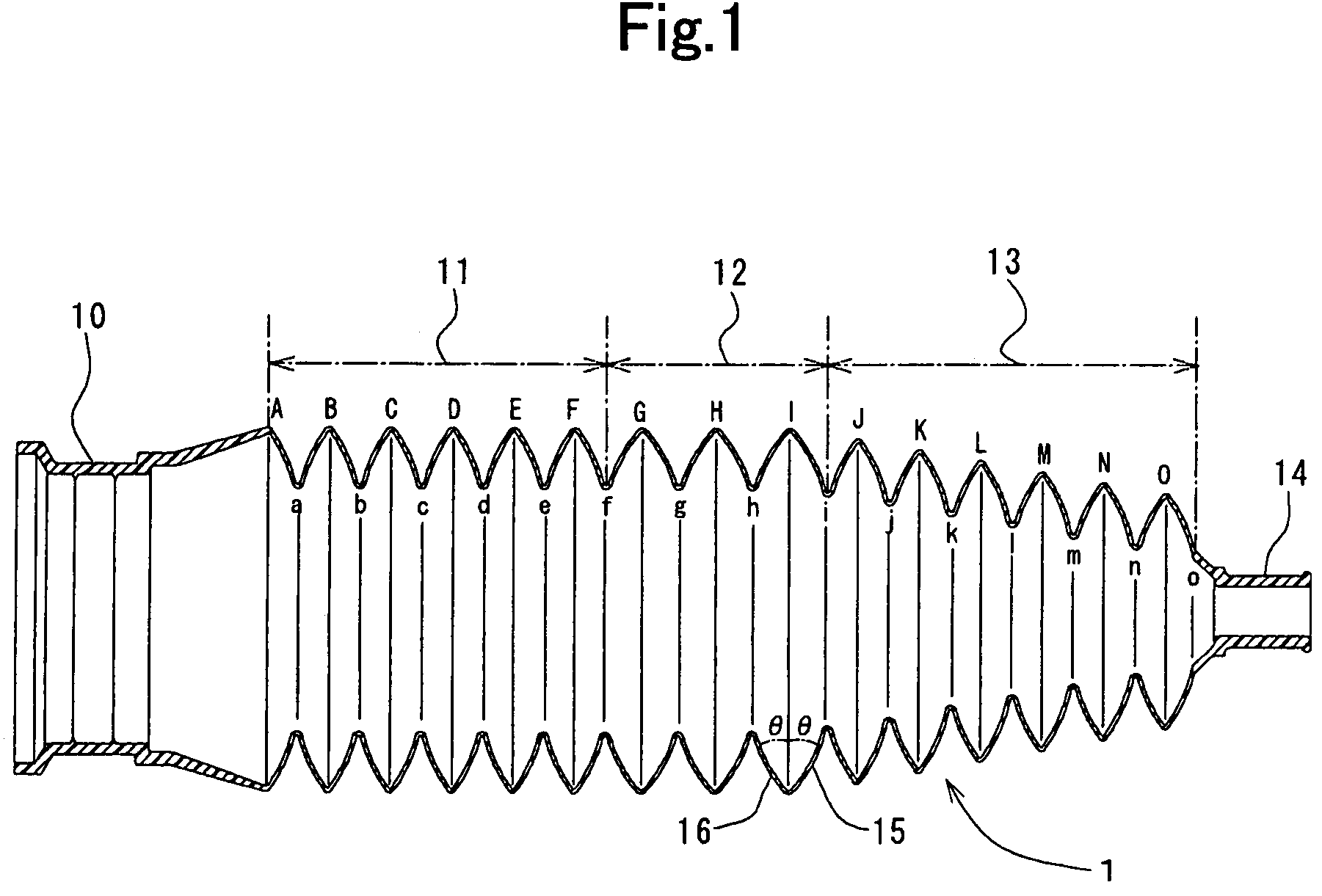Steering rack boot
a rack boot and steering rack technology, applied in the field of boots, can solve the problems of high man-hour requirements, damage to the conventional steering boot b>100/b>, and large drawbacks of the conventional method, and achieve the effect of preventing undulating deformation and low cos
- Summary
- Abstract
- Description
- Claims
- Application Information
AI Technical Summary
Benefits of technology
Problems solved by technology
Method used
Image
Examples
examples
[0056]Hereinafter, the present invention will be described more specifically with reference to examples and a comparative example.
example no.1
Example No. 1
[0057]FIG. 1 illustrates an axial cross-sectional view of a steering boot according to Example No. 1 of the present invention. As illustrated in the drawing, a boot 1 comprises a major-diameter fastener 10, a first bellows 11, a second bellows 12, a minor-diameter-side bellows 13, and a minor-diameter fastener 14. The first bellows 11 is disposed continuously from the major-diameter fastener 10. The second bellows 12 is disposed continuously from the first bellows 11. The minor-diameter-side, bellows 13 is disposed continuously from the second bellows 12. The minor-diameter fastener 14 is disposed continuously from the minor-diameter-side bellows 13. The boot 1 is made from resin, and is manufactured integrally by blow molding. Note that the boot 1 is not subjected to any heat treatment at all.
[0058]The major-diameter fastener 10 and minor-diameter fastener 14 are formed as a ring shape, respectively. Around the major-diameter fastener 10, a not-shown clamp is fitted. T...
example no.2
Example No. 2
[0068]Except that the minor-diameter-side bellows 13 is structured differently, a boot 1 according to Example No. 2 of the present invention is configured in the same manner as the boot 1 according to Example No. 1.
[0069]A boot 1 according to Example No. 2 of the present invention comprises a minor-diameter-side bellows 13 as illustrated in FIG. 4. As shown in the drawing, the minor-side-diameter bellows 13 comprises front membranes 15, and rear membranes 16 in the same manner as that of the boot 1 according to Example No. 1. Similarly, one of the front membranes 15, the section which starts at the top of the crest “M” and finishes at the bottom of the root “m,” for instance, makes an angle θ1 with respect to the diametric direction of the minor-diameter-side bellows 13, and one of the rear membranes 16, the section which starts at the bottom of the root “l” and finishes at the top of the crest “M,” makes an angle θ2 with respect to the diametric direction of the minor-...
PUM
 Login to View More
Login to View More Abstract
Description
Claims
Application Information
 Login to View More
Login to View More - R&D
- Intellectual Property
- Life Sciences
- Materials
- Tech Scout
- Unparalleled Data Quality
- Higher Quality Content
- 60% Fewer Hallucinations
Browse by: Latest US Patents, China's latest patents, Technical Efficacy Thesaurus, Application Domain, Technology Topic, Popular Technical Reports.
© 2025 PatSnap. All rights reserved.Legal|Privacy policy|Modern Slavery Act Transparency Statement|Sitemap|About US| Contact US: help@patsnap.com



